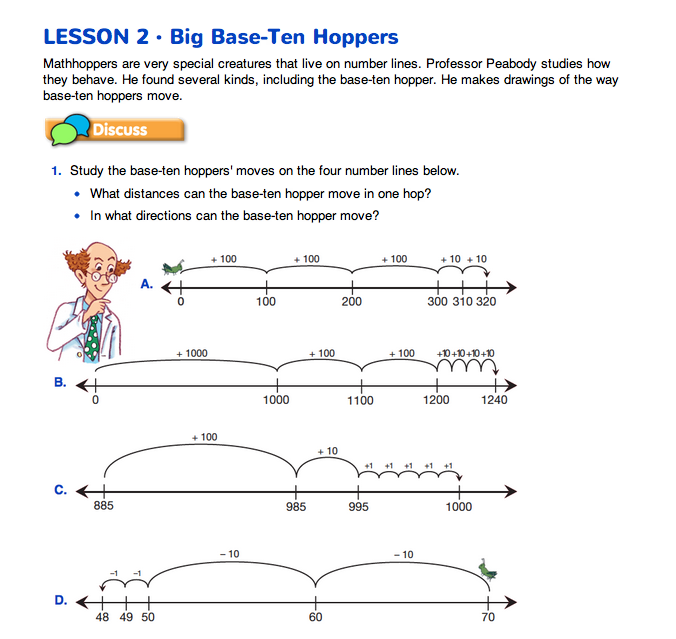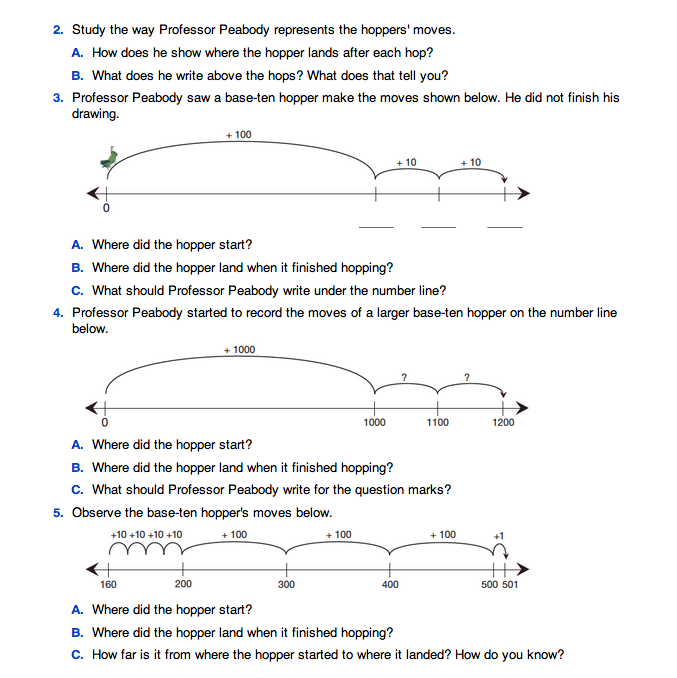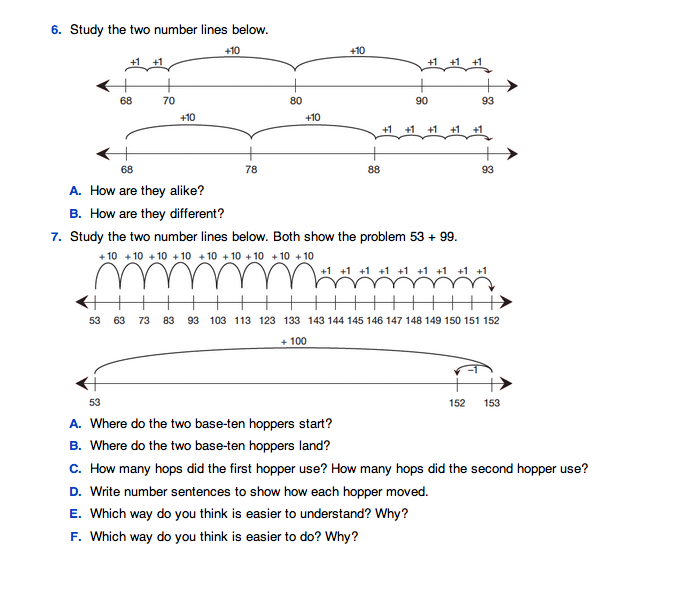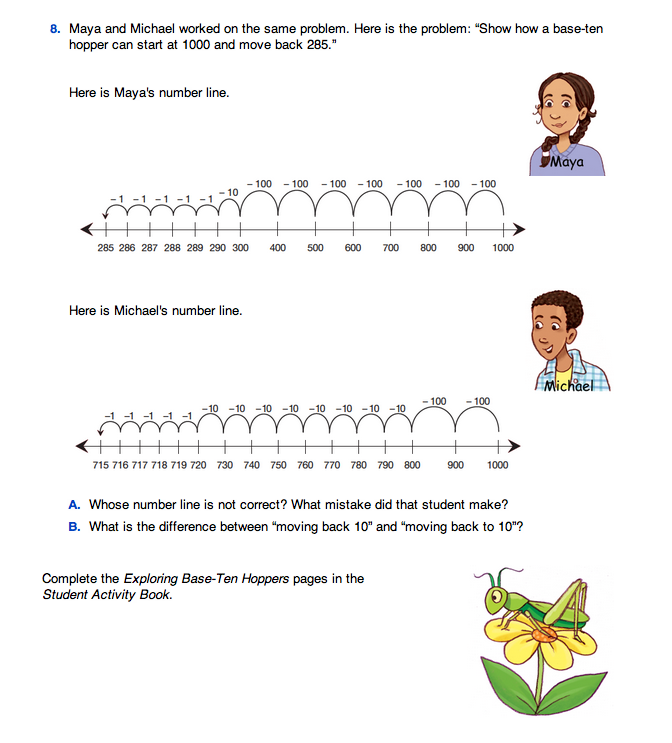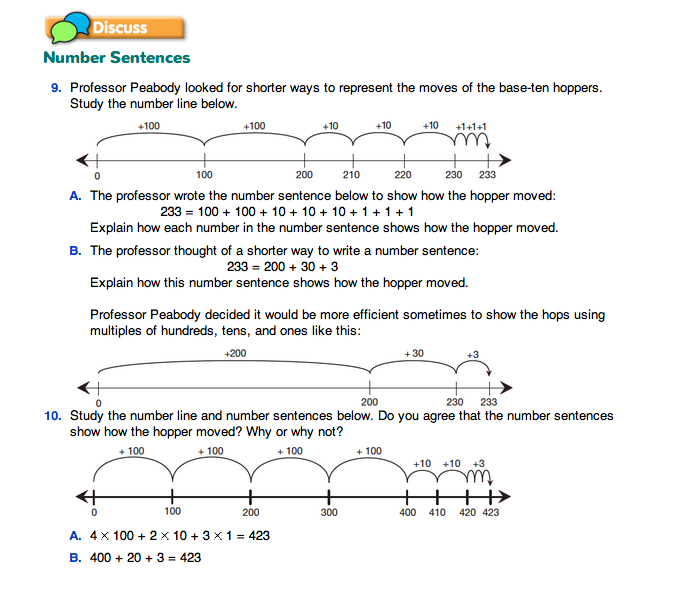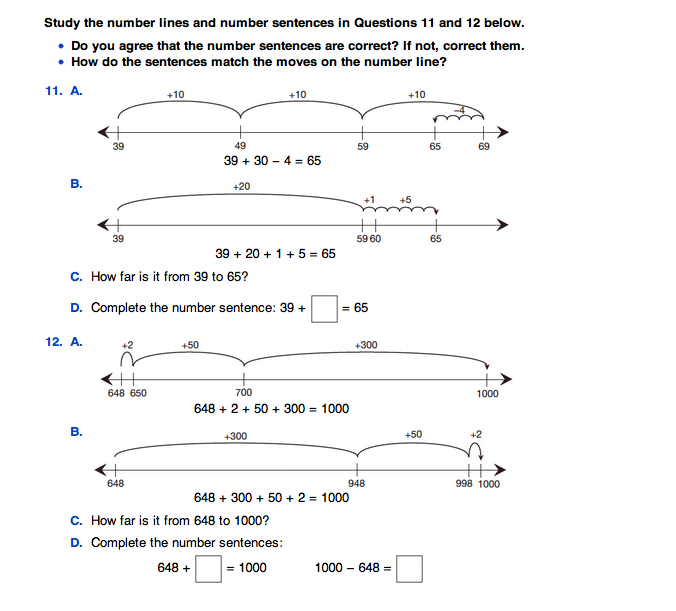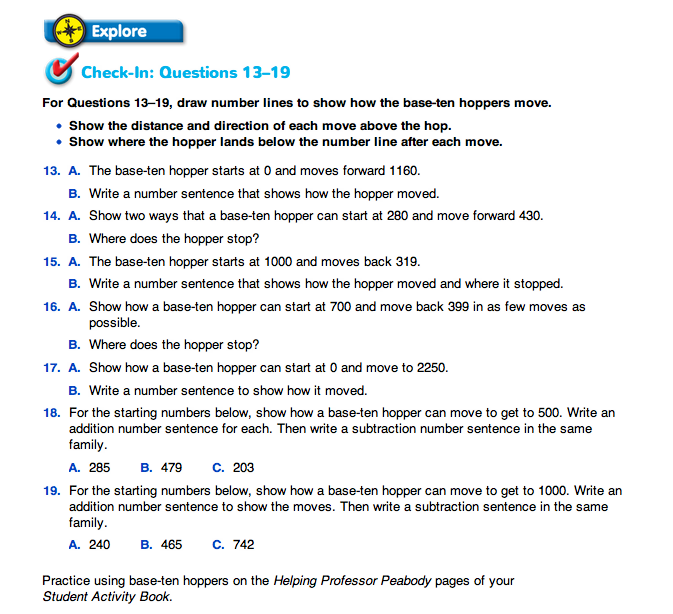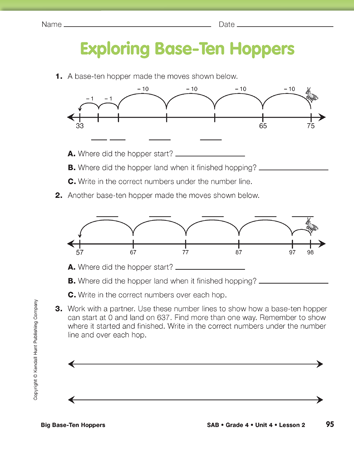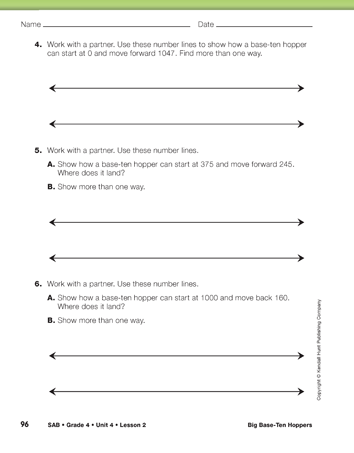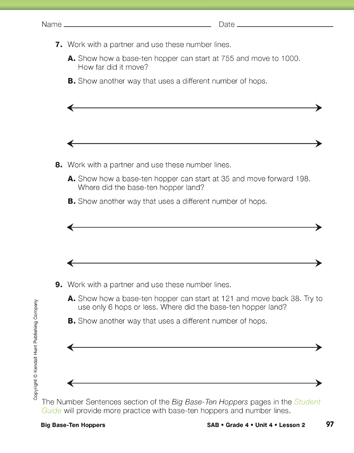Big Base-Ten Hoppers
Est. Class Sessions: 2–3Developing the Lesson
Part 1. Big Base-Ten Hoppers
Introduce Base-Ten Hoppers. Use a display of the first Big Base-Ten Hoppers page in the Student Guide to introduce the Base-Ten hoppers. Ask students to work in pairs to study the moves that a Base-Ten hopper can make using Questions 1 and 2. Tell students that they are Professor Peabody's assistants and that they need to prepare an oral report for the rest of the class on their observations of how the base-ten hoppers move and how Professor Peabody records their movements. A possible report follows:
“Base-Ten hoppers can make hops with distances of one, ten, one hundred, and one thousand on number lines. These are the only distances on the four number lines. Base-Ten hoppers can go forward or backward. You can see that sometimes the hoppers go forward and sometimes they go backward. Professor Peabody shows where the hopper lands after each hop by writing the number under the hop. He shows the direction of each hop by writing plus or minus above each hop with how far it goes.”
Encourage those listening to ask questions of those reporting so that everyone understands how the hoppers can move and how to record the movements.
Use the following prompts to further students' thinking:
Show Hops on the Number Line. Ask students to work on Questions 3–8 in pairs. These questions help students understand how they can show moves on the number line so someone else can see where the hopper starts, the distance and direction of each move, and the final stopping point.
Question 6 shows two ways to start at 68 and move forward 25. Students first compare the two sets of moves. The first hopper decides to partition the 5 into 2 and 3, so that it can move forward two from 68 to get to the nearest ten (68, 69, 70). Then it can hop two tens on the tens (80, 90) and then hop the last three ones (91, 92, 93) to 93. The second hopper starts counting by tens right away and then counts on the 5 ones (68, 78, 88, 89, 90, 91, 92, 93).
Ask:
In Question 7, students are introduced to base-ten hoppers that change direction in order to move to a target number in a more efficient way. For example, the number lines show moves adding 53 + 99. The first example shows partitioning 99 into 90 + 9 and making nine hops of 10 and nine hops of 1. The second example uses the fact that 99 is just 1 less than 100. The hopper makes one forward hop of 100, then one hop backward of 1. Students should see that both are appropriate ways to solve the same problem but that one is more laborious. Check for understanding in the second example. Ask a volunteer to write number sentences on the board for Question 7D.
53 + 90 + 9 = 152
53 + 100 − 1 = 152
Ask:
Students may recall making similar kinds of moves on their 100 Charts and 200 Charts in earlier grades. For example, on the 100 Chart, to add 22 + 19, they could start on 22 and move ahead two rows (of 10) to 42, and then back 1 space to 41. Discuss student responses to Questions 7E and 7F.
Question 8 draws attention to a common misreading of a problem, that is, differentiating between a problem that says “move back 200” and one that says “move back to 200.” Help students recognize the semantic difference between the two and the necessity of reading a problem carefully.
Explore Base-Ten Hoppers. Have students complete the Exploring Base-Ten Hoppers pages in the Student Activity Book. Remind them again to read the problems carefully, noting the difference between “move back” and “move back to.”
Several questions ask students to find more than one way to show how a hopper can move various distances on number lines. Ask more than one pair of students to draw their number lines and hops for each question on the board. Then ask other students to describe the moves shown on the board. Encourage them to question the students who presented their number lines if the moves are not clear or correct. Ask students who drew the number lines to explain why they chose to make the moves they did.
Number Sentences. The Number Sentences section in the Student Guide discusses how to show moves on number lines with number sentences. Have students discuss Questions 9–10 in pairs, then as a class. Have them connect each hop on the number lines to the symbols in the number sentences.
Questions 11–12 develop the idea of using number lines to find the difference between two numbers. That is, finding how far it is from 39 to 65 on a number line is the same as subtracting 39 from 65 and counting up from 39 to find the difference. Ask students to match the moves on the number lines to the numbers in the sentences.
After students have completed Questions 11D and 12D, ask:
Ask volunteers to write the sentences on the board.
Check-In: Questions 13–19 provide more practice using number lines to partition numbers and to count up and count back on number lines. If appropriate, use these questions to assess students' initial grasp of the use of partitions of a number to add and subtract on the number line. Alternatively, assign these questions for homework.

















